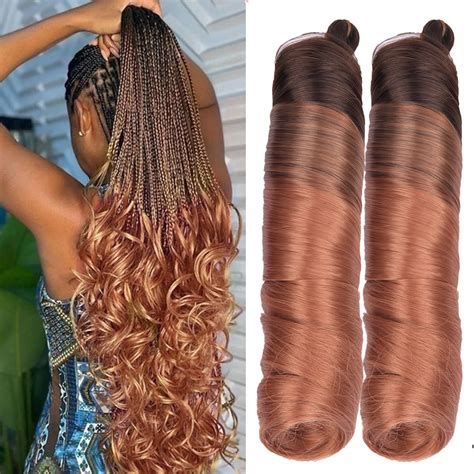Introduction

Hair extensions have become increasingly popular as a means of adding length, volume, and style to one’s own hair. Braiding hair extensions offer a versatile and protective method of achieving these desired results. This article delves deeply into the world of braiding hair extensions, exploring the various types available, their benefits, drawbacks, and how to choose the best option for your individual needs.
Types of Braiding Hair Extensions
Braiding hair extensions come in a wide array of materials and styles, each with its unique set of advantages and disadvantages. The most common types include:
1. Synthetic Hair Extensions
- Constructed from artificial fibers, such as nylon or acrylic
- Available in a wide range of colors and textures
- Less expensive than human hair extensions
- Can be prone to tangling and matting
2. Human Hair Extensions
- Derived from real human hair
- More natural-looking and blend seamlessly with your own hair
- Can be styled with heat tools and colored or bleached
- More expensive than synthetic hair extensions
3. Remy Hair Extensions
- A premium type of human hair extension
- The hair strands are all aligned in the same direction, resulting in less tangling and a smoother appearance
- Even more expensive than other human hair extensions
Benefits of Braiding Hair Extensions
-
Increased Length and Volume: Braiding hair extensions instantly add length and volume to your hair, creating a fuller and more voluminous look.
-
Versatile Styling Options: Braided hair extensions can be styled in a variety of ways, including loose waves, tight curls, and intricate braids.
-
Protective Hairstyle: Braiding hair extensions can protect your natural hair from damage caused by heat, styling tools, and environmental factors.
-
Low Maintenance: Braided hair extensions require minimal maintenance compared to other hair extension methods, such as clip-ins or hot fusion.
Drawbacks of Braiding Hair Extensions
-
Installation Time: Braiding hair extensions can take several hours to install, depending on the length and thickness of your hair.
-
Potential for Damage: If not installed or maintained properly, braiding hair extensions can damage your natural hair, causing breakage or hair loss.
-
Limited Lifespan: Braided hair extensions typically last for 6-8 weeks, after which they need to be removed and re-braided.
Choosing the Best Braiding Hair Extensions
Selecting the right braiding hair extensions involves careful consideration of several factors, including:
-
Hair Type: The texture and thickness of your natural hair should be matched to the texture and thickness of the hair extensions.
-
Desired Length and Volume: Determine the length and volume you want to achieve with the hair extensions.
-
Budget: Braiding hair extensions range in price, so it’s important to set a budget before making a purchase.
Installation and Maintenance Tips
-
Professional Installation: It’s highly recommended to have braiding hair extensions installed by a trained professional to avoid damage to your natural hair.
-
Proper Maintenance: Wash your braiding hair extensions regularly with a gentle shampoo and conditioner designed for extensions. Avoid over-brushing or using heat tools.
-
Regular Removal and Re-Braiding: Braiding hair extensions should be removed every 6-8 weeks to allow your natural hair to rest and prevent damage.
FAQs
1. Can I braid my own hair extensions?
While it’s possible to braid your own hair extensions, it’s not recommended unless you have extensive experience with braiding and hair extensions.
2. How long do braiding hair extensions last?
Braided hair extensions typically last for 6-8 weeks, after which they need to be removed and re-braided.
3. How much do braiding hair extensions cost?
The cost of braiding hair extensions varies greatly depending on the type of hair, length, and stylist. Expect to pay anywhere from $150 to $1,000 for a full head.
4. Can I dye braiding hair extensions?
Only human hair extensions can be dyed. Synthetic hair extensions cannot be dyed and may melt or become damaged if exposed to hair dye.
5. Can I swim with braiding hair extensions?
Yes, you can swim with braiding hair extensions. However, it’s important to keep them dry as much as possible to prevent tangling and matting.
6. Can I use heat tools on braiding hair extensions?
Only human hair extensions can be styled with heat tools, such as blow dryers, straightening irons, and curling irons. Synthetic hair extensions can be damaged by heat.
Conclusion
Braiding hair extensions offer an array of benefits, from increased length and volume to versatility in styling. By understanding the different types available, the installation and maintenance process, and the care considerations involved, you can make an informed decision about whether braiding hair extensions are right for you. With the proper installation and care, braiding hair extensions can enhance your locks and boost your confidence.
